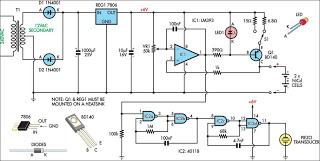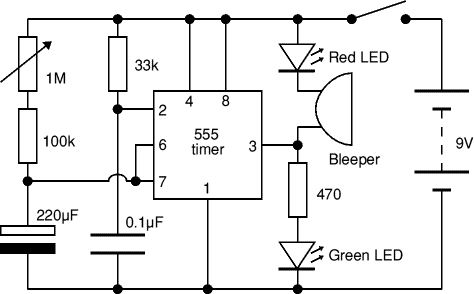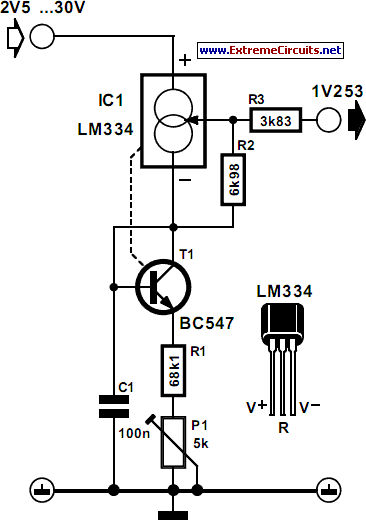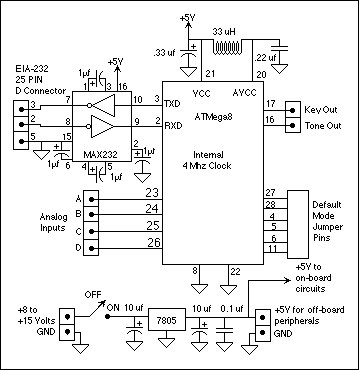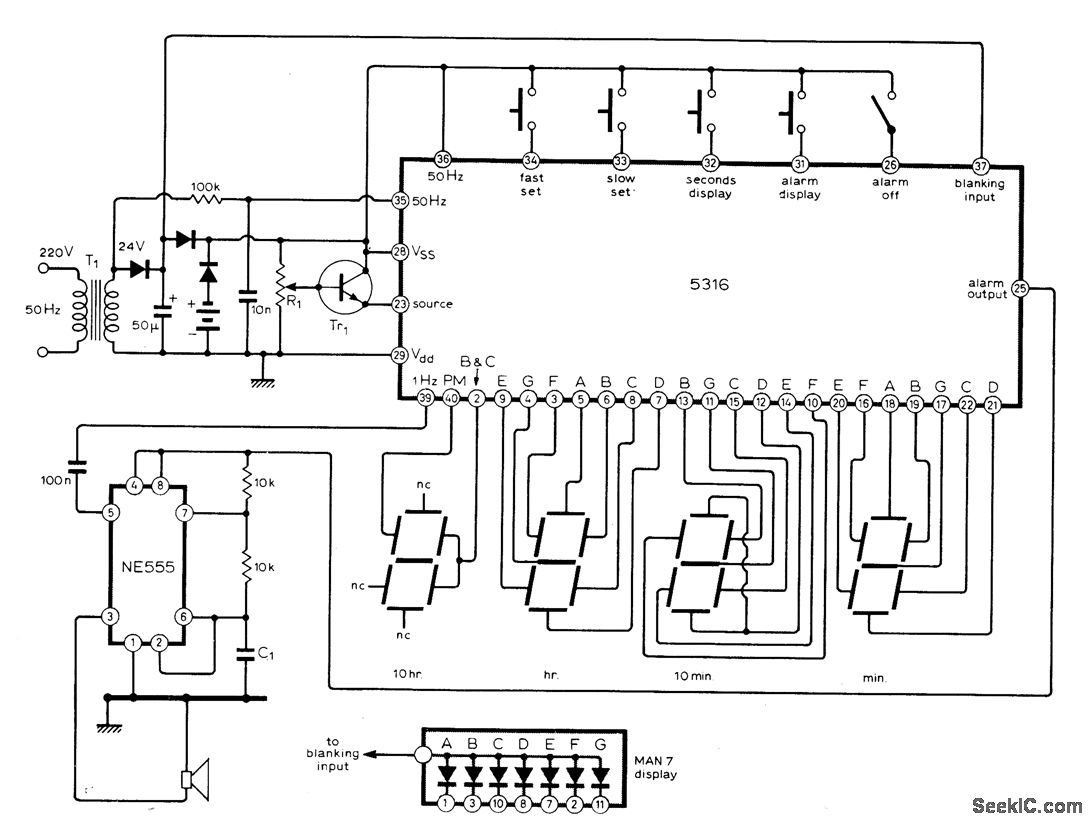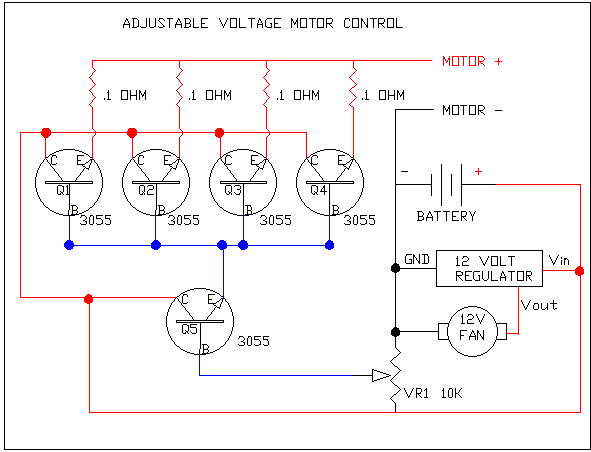
16-bit adjustable reference uses 8-bit digital potentiometers
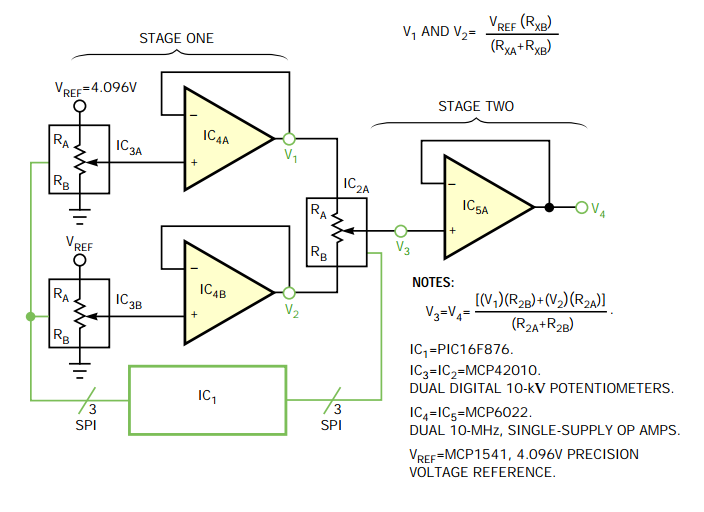
It may be easy to find a precision voltage reference for your application; however, a programmable precision reference is another matter. The circuit in Figure 1 yields a precision reference with an LSB of 62.5 µV. The circuit is a 16-bit DAC using three 8-bit digital potentiometers and three CMOS op amps. Each digital potentiometer operates as an 8-bit multiplying DAC. On the left side of Figure 1, two digital potentiometers, IC3A and IC3B, span across VREF to ground, and the wiper outputs are connected to the noninverting inputs of two amplifiers, IC4A and IC4B.
The described circuit is a sophisticated programmable precision voltage reference that utilizes a 16-bit digital-to-analog converter (DAC) architecture. This design incorporates three 8-bit digital potentiometers, which are configured to function as multiplying DACs. The precision reference output is characterized by a least significant bit (LSB) value of 62.5 µV, indicating a high level of resolution suitable for applications requiring fine voltage adjustments.
In the schematic, the digital potentiometers (IC3A and IC3B) are connected in a way that spans the reference voltage (VREF) to ground. This configuration allows for the precise adjustment of the output voltage through the wiper terminals of the potentiometers. The wiper outputs of both IC3A and IC3B are routed to the noninverting inputs of two operational amplifiers (IC4A and IC4B). These amplifiers serve to buffer and amplify the signals from the digital potentiometers, ensuring that the output voltage remains stable and accurate despite variations in load conditions.
The use of CMOS op-amps in this design is advantageous due to their low power consumption and high input impedance, which minimizes the loading effect on the digital potentiometers. The combination of the digital potentiometers and operational amplifiers allows for precise control over the output voltage while maintaining a compact and efficient circuit design.
This configuration can be particularly useful in applications such as precision instrumentation, calibration systems, or any scenario where a highly accurate and programmable voltage reference is required. By adjusting the digital inputs to the potentiometers, the output voltage can be finely tuned, enabling a wide range of voltage settings suitable for various electronic applications.It may be easy to find a precision voltage reference for your application; however, a programmable precision reference is another matter. The circuit in Figure 1 yields a precision reference with an LSB of 62.5 µV. The circuit is a 16-bit DAC using three 8-bit digital potentiometers and three CMOS op amps. Each digital potentiometer operates as an 8-bit multiplying DAC. On the left side of Figure 1, two digital potentiometers, IC3A and IC3B, span across VREF to ground, and the wiper outputs are connected to the noninverting inputs of two amplifiers, IC4A and IC4B.
🔗 External reference
The described circuit is a sophisticated programmable precision voltage reference that utilizes a 16-bit digital-to-analog converter (DAC) architecture. This design incorporates three 8-bit digital potentiometers, which are configured to function as multiplying DACs. The precision reference output is characterized by a least significant bit (LSB) value of 62.5 µV, indicating a high level of resolution suitable for applications requiring fine voltage adjustments.
In the schematic, the digital potentiometers (IC3A and IC3B) are connected in a way that spans the reference voltage (VREF) to ground. This configuration allows for the precise adjustment of the output voltage through the wiper terminals of the potentiometers. The wiper outputs of both IC3A and IC3B are routed to the noninverting inputs of two operational amplifiers (IC4A and IC4B). These amplifiers serve to buffer and amplify the signals from the digital potentiometers, ensuring that the output voltage remains stable and accurate despite variations in load conditions.
The use of CMOS op-amps in this design is advantageous due to their low power consumption and high input impedance, which minimizes the loading effect on the digital potentiometers. The combination of the digital potentiometers and operational amplifiers allows for precise control over the output voltage while maintaining a compact and efficient circuit design.
This configuration can be particularly useful in applications such as precision instrumentation, calibration systems, or any scenario where a highly accurate and programmable voltage reference is required. By adjusting the digital inputs to the potentiometers, the output voltage can be finely tuned, enabling a wide range of voltage settings suitable for various electronic applications.It may be easy to find a precision voltage reference for your application; however, a programmable precision reference is another matter. The circuit in Figure 1 yields a precision reference with an LSB of 62.5 µV. The circuit is a 16-bit DAC using three 8-bit digital potentiometers and three CMOS op amps. Each digital potentiometer operates as an 8-bit multiplying DAC. On the left side of Figure 1, two digital potentiometers, IC3A and IC3B, span across VREF to ground, and the wiper outputs are connected to the noninverting inputs of two amplifiers, IC4A and IC4B.
🔗 External reference
